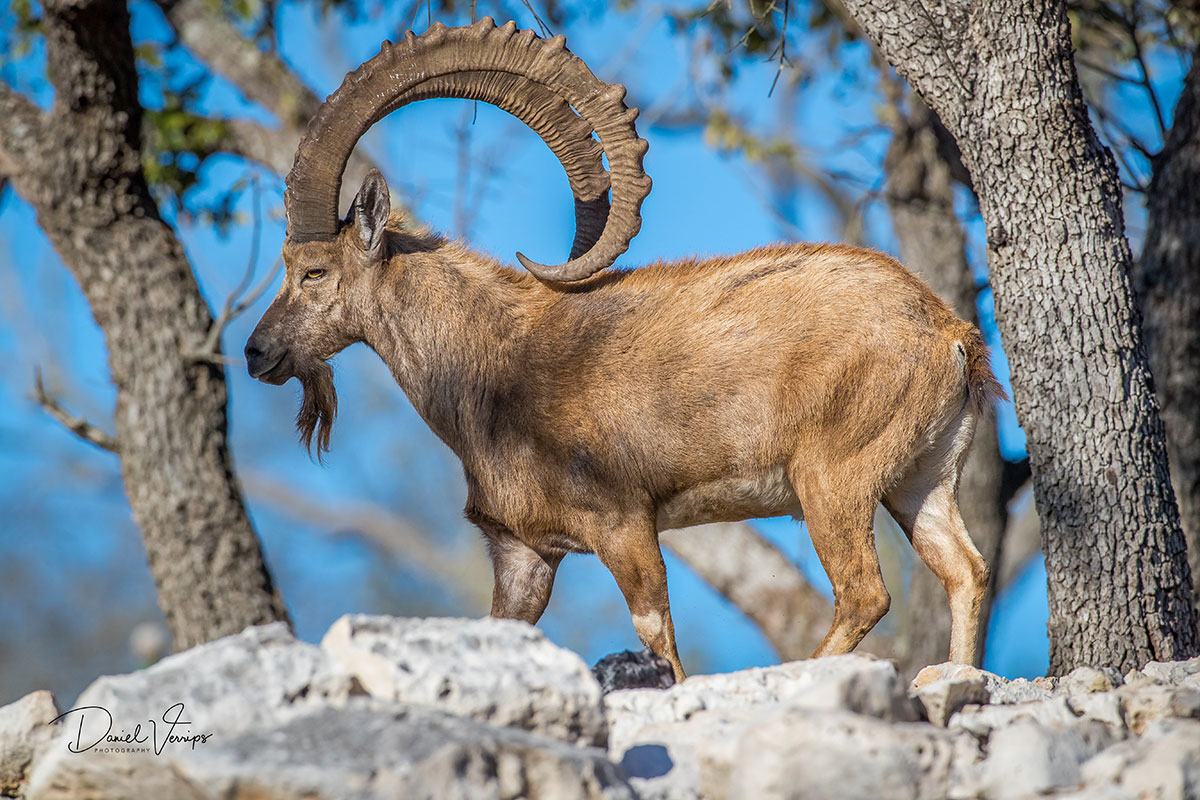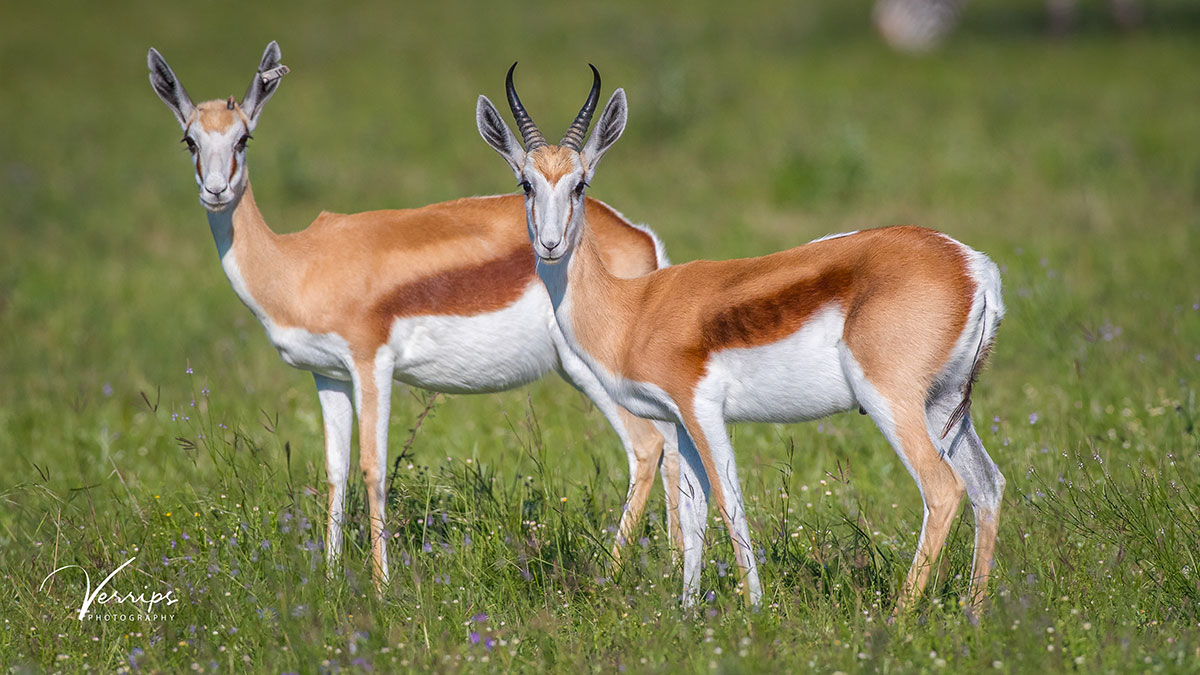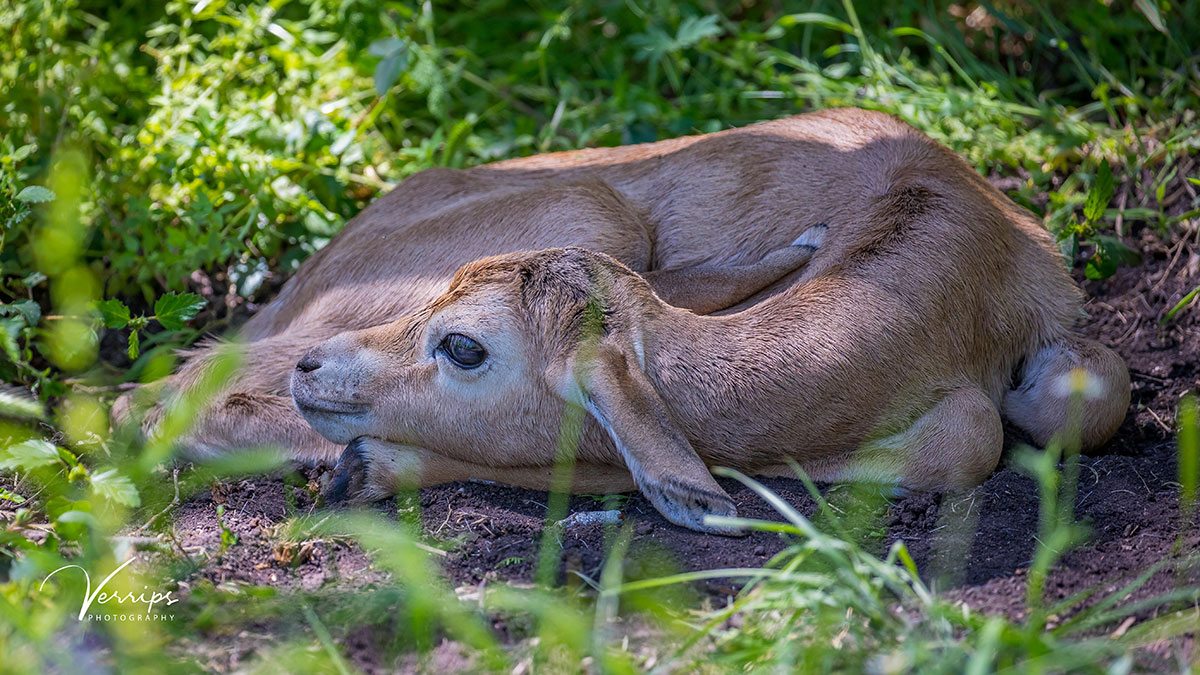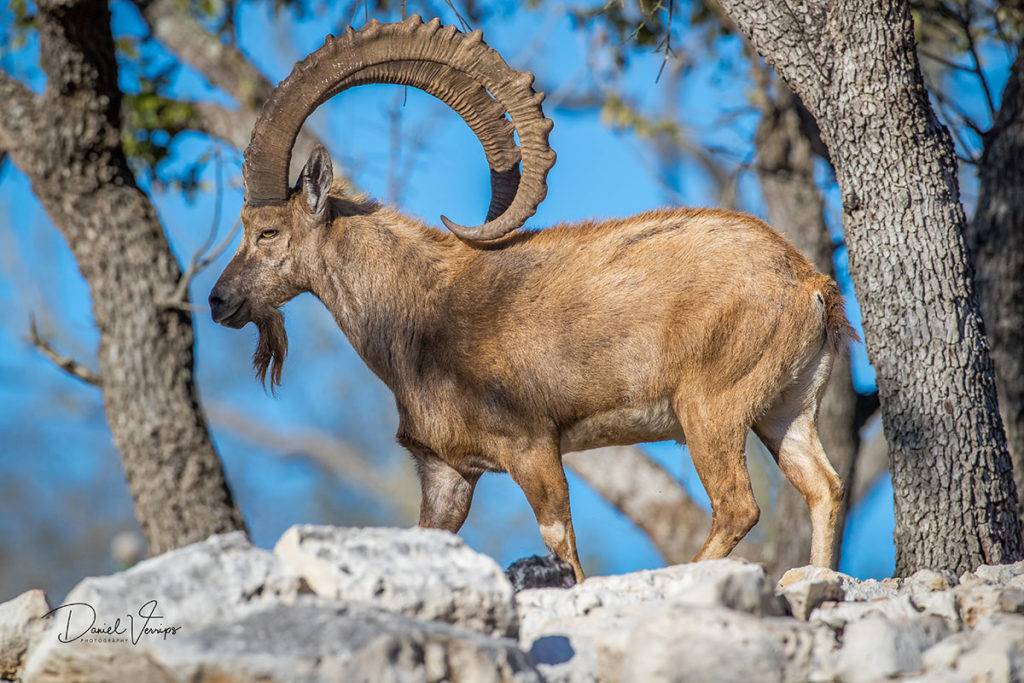 (Editor’s note: Brian Gilroy, CEO of Wildlife Partners and Life Member of SCI, has been a corporate of Sponsor of Safari Club International for many years.
(Editor’s note: Brian Gilroy, CEO of Wildlife Partners and Life Member of SCI, has been a corporate of Sponsor of Safari Club International for many years.
Through the company that he and his brother Chris Gilroy founded, they have become leaders of the exotic wildlife industry in Texas.
Their operations have resulted in over $40,000,000 in sales of non-native wildlife since 2016. The company is playing a critical role in preserving and growing the populations of more than 70 species, 16 of which are critically endangered or extinct in their native range.
At our request, Brian authored this article to share more insight with our members about the industry.)
With the introduction of The Game Theft Act of 1991, South Africans were granted rights allowing them to claim ownership of wildlife. This resulted in private landowners converting marginal farmland into habitat for native wildlife. Today, nearly one-sixth of South Africa has been game fenced and private enterprise owns three times the amount of land than all of South Africa’s State parks combined.
The product of this legislation is that in 2014, 225,200 animals were sold alive, 130,000 animals were hunted, and 500,000 were produced for food. South Africans generated $458,000,000 in revenue from sustainable use of wildlife and employed more than 65,000 people in the industries that facilitated these transactions.
Species like white rhino, bontebok, black wildebeest and many more were brought back from the brink of extinction. The eminent demise of wildlife, caused by population growth, widespread agriculture and the elimination of harmful and valueless animals, has been reversed and healed. This miraculous recovery and growth is the direct result of establishing a value system that gives wildlife an economic benefit that is greater than the return of growing crops, raising cattle or building population centers. When people associate wildlife with financial benefits, they work diligently to protect them.
South Africa has set an example for the world. In 1964 there were an estimated 575,000 game animals remaining; most were in national parks. Today there are more than 20,000,000, the majority of which are in private hands. When considering this outcome, even the most cynical naysayer cannot deny the success.
So why is this story important to Americans? Why should we care? Aside from being a miraculous conservation success that has provided hunting and vacation opportunities, what impact does this model have on us? The answer is that South Africans have charted a path that is being replicated right here in our own back yard.
Zoos and Texas
 As the result of zoos producing surplus animals, beginning in the 1950s a steady flow of non-native animals has arrived on Texas ranches. Today there are more than 125 exotic species living on private farms. These include animals such as the dama gazelle, addax, Arabian oryx, Pere David deer, Grevy zebra, mountian bongo and scimitar oryx. In their native ranges, these animals exist in very low numbers. In some cases, they have been classified as extinct in the wild by the IUCN. Despite the decimated status in the wild, these species are safe. Texas landowners have given them their only hope for survival.
As the result of zoos producing surplus animals, beginning in the 1950s a steady flow of non-native animals has arrived on Texas ranches. Today there are more than 125 exotic species living on private farms. These include animals such as the dama gazelle, addax, Arabian oryx, Pere David deer, Grevy zebra, mountian bongo and scimitar oryx. In their native ranges, these animals exist in very low numbers. In some cases, they have been classified as extinct in the wild by the IUCN. Despite the decimated status in the wild, these species are safe. Texas landowners have given them their only hope for survival.
To provide a better understanding of the background related to these animals, it helps to know where they came from. Despite an incorrect assumption that Texans imported the foundation stock, the lineage traces to large city zoos. Yes, zoos! AZA zoos (Association of Zoos and Aquariums) such as San Diego Safari Park have been consistently sending excess antelope to Texas for decades. The baby zebra you see at the park will quite possibly end up in the Texas Hill Country.
Despite avoiding public acknowledgment, zoos understand and capitalize on the fact that animals have value. The business of a zoo is to sell tickets, drinks and souvenirs. They create demand for attendance and service by displaying wildlife. Their model goes far beyond simple display. When a hippo, giraffe or elephant is born, more people buy tickets. We’ve all heard about the baby panda! Like all amusement parks that need a new exciting rollercoaster, zoos need an emotional reason for visitors to show up. They create this emotional appeal by producing offspring. Offspring equal visitors, visitors result in cash flow.
Another motivation for zoos to breed is that due to health concerns, it is almost impossible to import hoof-stock. To ensure that there will be animals available for display in the future, AZA zoos perform intricate genetic modeling and they mandate a trading system (Species Survival Plan) among the 235 Accredited zoos. This swapping is done to preserve maximum genetic diversity. As part of this exchange, thousands of animals are transported across the U.S. every year. If it were not for the revenue and donations generated from exhibiting wildlife and the need to maintain their availability for the future, zoos would not undertake this monumental task or expense.
The inadvertent consequence of producing offspring to drive attendance and produce revenue, coupled with the sophisticated breeding plans, is that thousands of surplus animals are born each year. Simply put, zoos do not have enough space to house these offspring once they reach maturity, so where do they go?
Texas!
For the past 50 years and as recently as yesterday, shipments of antelope from AZA zoos are arriving in Texas. This byproduct has facilitated the creation of a conservation success that rivals what was seen in South Africa.
Everyone knows that Texans don’t do anything in a small way. What started as an experiment between San Antonio Zoo and the YO Ranch has grown into more than 5,000 ranches, 20,000 jobs, billons of dollars in economic impact to the State and the well-earned title of being known as Noah’s arc for the worlds four-legged wildlife.
There are many factors apart from the availability of surplus animals that led to this phenomenal development. The building of the Texas Exotic Wildlife industry involved ego, status symbols, bragging rights and hunting. Although it was not built upon financial incentives, today those benefits have become too significant to ignore. In fact, they are driving demand and Texans are reaping the benefits.
To demonstrate the growth path:
1963 there were 13 species on a handful of ranches.
1966 25 species created a combined 37,495 animals.
1979 51 species comprised of 72,147 animals.
1992 486 ranches housed more than 70 species and 2,361,000 acres were dedicated to housing exotics. 2007 Texas A&M University as directed by Texas Congressman Henry Bonilla conducted an economic impact study of the exotic industry. This study revealed $1,300,000,000 of benefit and more than 14,000 jobs.
2019 there are more than 5,000 ranches and exotic wildlife populations are in the hundreds of thousands.
 While the hunting market played an important part in the development of the industry, far more capital has been committed by cowboy hat-wearing business owners with egos and a love for wildlife. These landowners have been the primary driver to the growth and demand for wildlife. Unfortunately, until recent years, the only light shed on these exotics in Texas was that of the canned hunting ranch. Sadly, this portrayal doesn’t in any way represent the truth of the silent majority.
While the hunting market played an important part in the development of the industry, far more capital has been committed by cowboy hat-wearing business owners with egos and a love for wildlife. These landowners have been the primary driver to the growth and demand for wildlife. Unfortunately, until recent years, the only light shed on these exotics in Texas was that of the canned hunting ranch. Sadly, this portrayal doesn’t in any way represent the truth of the silent majority.
As technology has allowed landowners to become more connected, a very reliable marketplace has developed. Seamless transactions are becoming the norm, which has contributed towards the demand for wildlife increasing to unthinkable levels.
As the markets have become more accessible, the government has passed tax legislation that positively affects this sector. In 2017, under the Tax Cuts and Jobs Act, business equipment is 100 percent tax deductible in the year of purchase. The definition of business equipment includes livestock. Consequently, non-native wildlife has not only become easy to buy and sell, but it is 100 percent tax deductible against business income. It doesn’t take an economist or CPA to understand the result of this benefit.
For more than five decades, Texans have given safe haven to the world’s wildlife. Whatever the motivations, the result is that extremely rare species are thriving in Texas. As financial markets developed and tax incentives are being applied, there are two winners; those who own wildlife and the animals themselves. In evaluating where in the cycle Texas is today, it is best to look at the history of South Africa.
In 1991 it was estimated that there were fewer than 100,000 animals remaining in the country. As the result of private ownership and investment of $15,000,000,000, the industry saw compounding investment returns of 20 percent per year for more than 15 years. It was not until 2018 that a downturn occurred.
In total the South African model, beginning with 100,000 animals, saw growth and great returns for 27 years. At the downturn, populations exceeded 20,000,000 animals. How could anyone look at this result and not applaud South Africans? Billions of dollars were made and 20,000,000 animals exist today as the result. This is the model that Texas is following.
Today in Texas, there are likely 100,000 or fewer super exotics. This number excludes species such as axis deer, aoudad, fallow deer and blackbuck. There could be close to one million of these four species.
Texas is roughly half the size as South Africa with less than half the population. Land is 95 percent privately owned. With more than 5,000 landowners housing exotics and new buyers arriving every day, due to the significant tax incentives, the supply of available animals is incapable of meeting the demand. The only way to grow is through producing offspring. It has been demonstrated that in South Africa it took 27 years to reach a shift between supply and demand.
 As can be easily demonstrated through a South African case study, Texas is clearly on a similar trajectory. There are significant benefits and financial incentives that are materializing. Wildlife is the greatest benefactor, although that could be hotly debated by CPAs filing the tax returns for the landowners acquiring things such as kudu, sable and impala.
As can be easily demonstrated through a South African case study, Texas is clearly on a similar trajectory. There are significant benefits and financial incentives that are materializing. Wildlife is the greatest benefactor, although that could be hotly debated by CPAs filing the tax returns for the landowners acquiring things such as kudu, sable and impala.
It has been proven by South Africans, American zoos and Texas landowners that anytime, regardless of the source of the value, when wildlife can produce financial benefits, the outcome is that more animals are created. Whether you agree with the ethics or methods, if the goal is to preserve and save species from extinction, giving them a monetary value has shown to be the most successful plan to achieve that goal.

